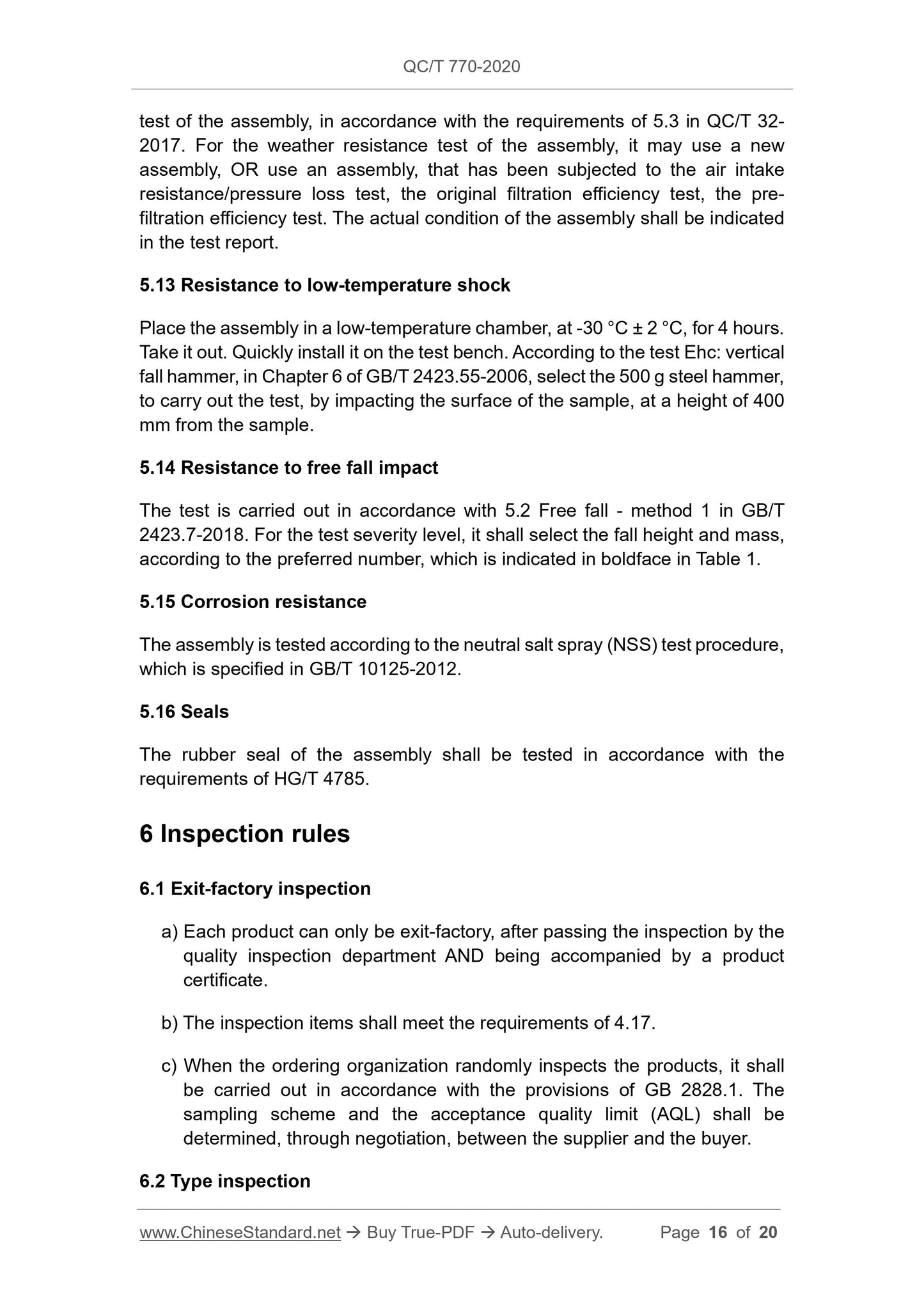1
/
of
6
www.ChineseStandard.us -- Field Test Asia Pte. Ltd.
QC/T 770-2020 English PDF (QC/T770-2020)
QC/T 770-2020 English PDF (QC/T770-2020)
Regular price
$230.00
Regular price
Sale price
$230.00
Unit price
/
per
Shipping calculated at checkout.
Couldn't load pickup availability
QC/T 770-2020: Dry type air cleaner assembly of automobiles
Delivery: 9 seconds. Download (and Email) true-PDF + Invoice.Get Quotation: Click QC/T 770-2020 (Self-service in 1-minute)
Newer / historical versions: QC/T 770-2020
Preview True-PDF
Scope
This document specifies the technical requirements, test methods, inspectionrules, marking, packaging, transportation, storage of dry-type air cleaner
assemblies of automobiles.
This document applies to dry-type air cleaner assemblies (hereinafter referred
to as assemblies) of automobiles (excluding passenger cars), which have a
volume flow of less than 4000 m3/h. For the dry air cleaners for construction
machinery, agricultural and forestry machinery, ships and stationary power, they
may also refer to this document.
Basic Data
| Standard ID | QC/T 770-2020 (QC/T770-2020) |
| Description (Translated English) | Dry type air cleaner assembly of automobiles |
| Sector / Industry | Automobile and Vehicle Industry Standard (Recommended) |
| Classification of Chinese Standard | T13 |
| Word Count Estimation | 14,166 |
| Date of Issue | 2020-08-31 |
| Date of Implementation | 2021-01-01 |
| Older Standard (superseded by this standard) | QC/T 770-2006 |
| Regulation (derived from) | Ministry of Industry and Information Technology Announcement No. 37 (2020) |
| Issuing agency(ies) | Ministry of Industry and Information Technology |
Share


